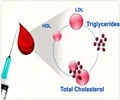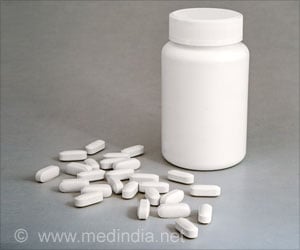The use of fibrates to reduce cholesterol levels has grown sharply in the U.S. over the past decade, despite mounting evidence that the drugs provide little benefit.

Cynthia A. Jackevicius, Pharm.D., M.Sc., of Western University of Health Sciences, Pomona, Calif., and colleagues examined trends in the current use of fibrates in the United States and Canada. The study included data from the United States and Canada of patients prescribed fibrates between January 2002 and December 2009, and expenditures associated with those prescriptions.
In the United States, fibrate prescriptions dispensed increased from 336 prescriptions/100,000 population in January 2002 to 730 prescriptions/100,000 population in December 2009, an increase of 117.1 percent. In Canada, fibrate prescriptions increased from 402 prescriptions/100,000 population in January 2002 to 474 prescriptions/100,000 population in December 2009, an increase of 18.1 percent.
In the United States, fenofibrate prescriptions dispensed increased from 150 prescriptions/100,000 population in January 2002 to 440 prescriptions/100,000 population in December 2009. In Canada, fenofibrate prescriptions increased from 321 prescriptions/100,000 population in January 2002 to 429 prescriptions/100,000 population in December 2009. "Estimated fenofibrate use was relatively constant between 2002 and 2009 in Canada, while in the United States, use increased by 159.3 percent," the authors write.
In the United States, crude fenofibrate costs increased from $11,535/100,000 population/month in 2002 to $44,975/100,000 population/month in 2009, while in Canada, the costs declined for fenofibrate from $17,695/100,000 population/month in 2002 to $16,112/100,000 population/month in 2009. Adjusted estimated fibrate expenditures per 100,000 population were approximately 3-fold higher in 2009 in the United States compared with Canada.
The researchers also found that there was a strong preference observed for prescribing brand-name over generic fenofibrate products in the United States, but not in Canada.
Advertisement
"Fibrates are used commonly in the United States and Canada. Use has increased steadily in the United States over the last decade despite published negative results from fibrate trials in patients with diabetes who were also taking statins; however, fibrate use in Canada has remained stable. Fenofibrate dominates the market despite it having the least supportive clinical outcomes evidence. While this growth in the setting of a strong preference for brand-name over generic fenofibrate in the United States has been associated with higher medication costs, improvement in clinical outcomes is uncertain."
Advertisement














